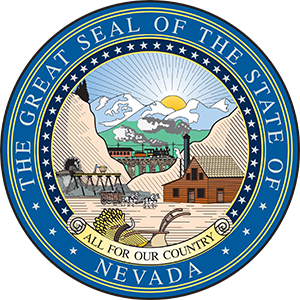In 2008 the U.S. Department of Energy applied to the U.S. Nuclear Regulatory Commission for authority to construct a geologic repository for highly radioactive waste at Yucca Mountain in Nevada.
The commission’s adjudicatory hearing process on the license application has been suspended since September 30, 2011.
Proponents of the federal Yucca Mountain Project regularly call for finishing the stalled licensing proceeding. One former Department of Energy official opined earlier this year: “The remaining costs of concluding these hearings and getting a final (Nuclear Regulatory Commission) decision on the adequacy of Yucca Mountain as the nation’s high-level waste repository are minuscule when compared to the sunk costs already incurred and the costs of starting over.”1
The Department of Energy’s own cost studies and budget requests say otherwise.
More than a year before submitting the license application the Department of Energy already expected a long and costly adjudication. In May 2007, the Department of Energy estimated it would need $1.66 billion dollars (in 2007 dollars) for “all activities associated with the licensing process,” over the period 2007-2017.2
In February 2008 — when the Department of Energy was “about to deliver the application for a construction authorization to the commission as required by the Nuclear Waste Policy Act,” — the Department of Energy told Congress the “funding profiles needed to achieve that schedule are significantly higher than the historical funding levels.”
The Department of Energy said it would need $6.7 billion (in 2008 dollars) just for the first five fiscal years (FY 2009 – FY 2013) after submitting the license. For fiscal year 2009, more than half the $372 million requested for the Yucca Mountain Project was directly related to licensing. The remainder was for tasks that would indirectly supported licensing.3
The Department of Energy has not publicly updated its estimated licensing costs in the years since it submitted the application. Using the Minneapolis Federal Reserve Board inflation calculator, the Department of Energy’s 2007 estimate of $1.66 billion would be about $2.34 billion in mid-2022 dollars.4
In 2016, the NRC chairperson estimated it would cost “about $330 million” over “multiple years” to complete the licensing process.5
Updating the 2016 Nuclear Regulatory Commission cost estimate to mid-2022 dollars yields an estimated $402 million in addition to the Department of Energy’s costs.6
Even if the estimated Department of Energy licensing costs are reduced to reflect funds spent before the Obama administration terminated work on Yucca Mountain, the cost for the Department of Energy and the Nuclear Regulatory Commission completing the licensing proceeding would almost certainly exceed $2.4 billion and would probably exceed $3 billion.
Further, the Department of Energy’s licensing cost estimates in 2007 and 2008 were calculated before May 2009 when the Nuclear Regulatory Commission’s licensing boards admitted 299 contentions challenging the energy department’s license application. These included an unprecedented 218 contentions submitted by the state of Nevada.
Each of Nevada’s admitted safety contentions documents a violation of the Nuclear Regulatory Commission’s safety regulations applicable to the Yucca Mountain Project. They range from flaws in the overall performance assessment model and calculations to very specific geotechnical issues
These include 10 challenges to the Department of Energy’s analysis of the potential for renewed volcanic activity in the vicinity of the Yucca Mountain site; 24 challenges to the energy department’s reliance on engineered barriers, including effects of earthquakes and reliance on drip shields; 41 challenges to the energy department’s evaluation of corrosion of the waste packages and drip shields; 10 challenges to the Department of Energy’s evaluation of aircraft crash hazards to surface facilities; and other key safety and site suitability issues.
These safety contentions are critical to Nevada’s case against the license application because a “win” on any one of them will lead the Nuclear Regulatory Commission to deny the license application.
Nevada’s contentions also challenge the adequacy of the Department of Energy’s repository and transportation environmental impact assessments.
1 Ward Sproat, Former Director, DOE Office of Civilian Radioactive Waste Management, Comments submitted to DOE, December 10, 2021, Responses to the Request for Information on Using a Consent-Based Siting Process to Identify Federal Interim Storage Facilities, page 1366, https://www.energy.gov/sites/default/files/2022-06/Responses%20to%20RFI%20on%20Consent-Based%20Siting%20and%20Interim%20Storage%20Updated.pdf
2 These estimates were published in 2008. See: DOE Total System Life-Cycle Cost Report (2008), pages 8, 17 – 19. https://www.energy.gov/sites/prod/files/gcprod/documents/FY_2007_TotalSystemLifeCycleCost_Pub2008.pdf
3 DOE, FY 2009 Congressional Budget Request, DOE/CF-028 (February 2008), Volume 5, Pp.549-552, 569-580, 583 – 585. https://www.energy.gov/sites/prod/files/FY09Volume5.pdf
4 https://www.minneapolisfed.org/about-us/monetary-policy/inflation-calculator
5 Stephen Burns, Chairman, U.S. NRC, Testimony, ENERGY AND WATER DEVELOPMENT APPROPRIATIONS FOR 2017, Hearings before the House Committee on Appropriations, Subcommittee on Energy and Water Development, 114th Congress, Second Session, February 10, 2016, Pp. 30-31. https://www.congress.gov/114/chrg/CHRG-114hhrg20729/CHRG-114hhrg20729.pdf
6 https://www.minneapolisfed.org/about-us/monetary-policy/inflation-calculator
7 Report and Recommendations of the Nevada Commission on Nuclear Projects, November 2019, p. 16. http://yuccamountain.wpengine.com/wp-content/uploads/2022/08/2019-Report-RecommendationADA-sm.pdf
Co-author Fred C. Dilger Ph.D., is executive director of the Nevada Agency for Nuclear Projects. Co-author Robert J. Halstead served as executive director of the Nevada Agency for Nuclear Projects from 2011 – 2020. Dr. Dilger and Mr. Halstead have more than 50 years combined experienced working on Yucca Mountain issues and have authored or co-authored more than 50 publications and reports on nuclear waste management, environmental impact assessment, and energy policy.
